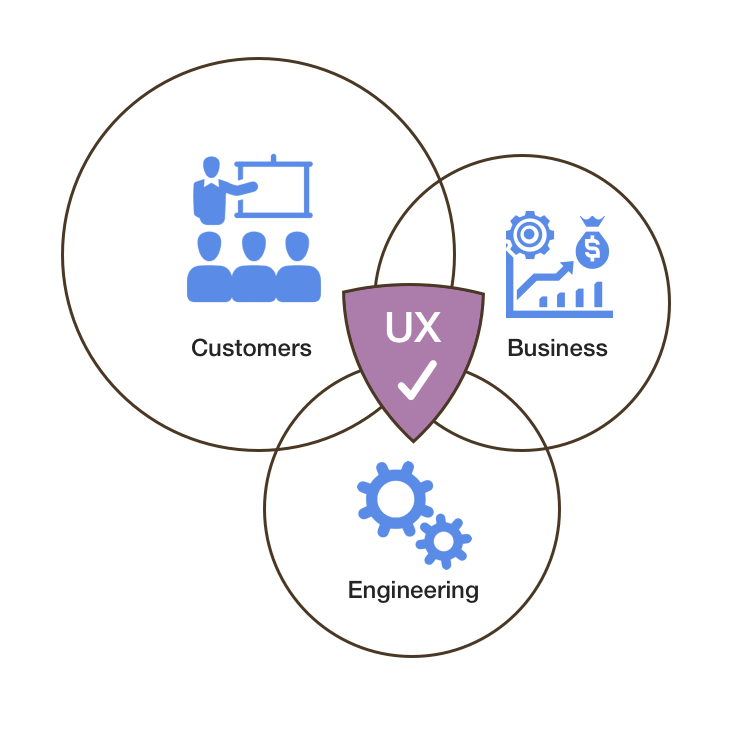
Behind the curtain
Back end capabilities developed to drive the system
Overview
Back end capabilities are needed to drive the data-driven system. The system was rebuilt top-to-bottom using react components to kjhkhkhkhkhkhkh.
Admistration systems need be enabled for individual Product teams to manage and govern the display of their products.
A recommendation engine was developed to add relational product suggestions and ad placements.
The Goal
Design and release back-end capabilities based on business and marketing needs to manage and govern products and to provide users other educational offerings driving revenue
Back end systems
Admin Panel - Adding forms to the third party Product Management Tool for governing of new editions, release dates, and pricing.
React Components - Top to bottom architecture re-build allowing for components to be embedded into other systems.
Recommendation Engine - For displaying related products and add placements in carousels and side-bars.
Roles and Responsibilities
My Role
Senior UX Lead, Interaction & Visual Design, User Testing, Wireframing, Prototyping.
The Agile Team
Product Manager, Lead UX Designer, Product developer devoping third part content management tools.
The Tools
Sketch, Adobe Creative Suite (Wireframes, Static Prototypes).
InVision (illustrating form design and workflow sequencing)
GridTools (Content management system)
The Timeline
Project start: October 2016
Releases: January 2017 - December 2017
Scope & Constraints
Building a data driven system would put the ownus on individual product administrators to add images, content, and pricing.
Final user displays would depend on governance. the final display was in their hands.
Defining the needs
Audit current admin tool, interview and observe workflows, constantly test capabilities
What the tools need to do
jhgjgkgkgkgh
jhgkgkhkhkh
kghkhkhkhlh
khkhkhlhlhj
The current workflows
kjhhhhlhlhlh
khlhlhjljljhlhlhj
khkhkhkhkhkh
Iterative Design Releases
The evolution and timeline of the enterprise software solution
2. Developing the admin panels - Date X - Date X
Challenge
Partner with the Database and Product Records Team to enhance the current Administration tool used for managing and governing products, customer availability, and student pricing.
Understanding the needs
I scheduled meetings with key internal personal that administrated our product records to assess their current workflows, needs, pain points, and wish-lists.
Live walkthroughs of the processes allowed me to make formative decisions on the design direction.
Ideation
Using the proprietary content management system as a template, I created wireframes to illustrate the added forms and features needed for total control over the product records.
Partnering with the development team, I completed the design of the system flows to guarantee accurate data integration.
Testing the system
The system was tested to ensure data was passed into the system.
The system was put in front of Product Admins for Usability and accuracy.
Outcome
kjhkghkgh
jgkgkgh
4. React Components - Date X - Date X
Ideation and prototyping
I created whiteboards and wireframes to illustrate the page elements, page sequencing, and user flows.
Partnering with engineering, I created system flows to gain an understanding of data integration.
Testing the system
The system was tested to ensure data was passed into the system.
The system was put in front of Product Admins for Usability and accuracy.
5. Recommendations Engine - Date X - Date X
Ideation
I created whiteboards and wireframes to illustrate the page elements, page sequencing, and user flows.
Partnering with engineering, I created system flows to gain an understanding of data integration.
Recommendation Engine
Prototyping
I created whiteboards and wireframes to illustrate the page elements, page sequencing, and user flows.
Partnering with engineering, I created system flows to gain an understanding of data integration.
Testing
The system was tested to ensure data was passed into the system.
The system was put in front of Product Admins for Usability and accuracy.
Wash and Repeat
Reconducting the original test plan using actual high fidelity prototypes
Final Testing
I repeated task-based testing with 5 instructors to ensure the POC matched the original hypothesis to create a single platform.
Subjects were given the simple task of finding a specific product and asked to use the system to locate that product.
Observations included:
Basic search methods - Preference of using the search bar vs. navigation.
Search results display - Does the information in the display lists supply enough information to accurately locate the specific product?
Product Detail Page (PDP) - Does the Overview, Table of Contents, and Author details supply enough information to consider adoption of the product?
Interview questions included:
What are the page elements that are most important in driving adoption confidence?
System Usability Scale (SUS)
Results
90% of instructors found the system simple, friendly, and familiar.
Seach vs. Navigation capabilities varied. Interestingly, Math and Science preferred the search bar, Humanities and Professional Trades preferred browsing.
Many voiced they didn’t know Pearson had such a wide variety of products.
The preferred stacking order of the Overview, Table of Contents, and Author details on the PDPs also varied.
Unanimously, the most important page elements to drive adoption were Product Image, Title, ISBN, and Student cost.
SUS ratings received an average of 9 (second highest) amongst all participants.
Challenges
The current system used legacy technology that would need to re-built from top to bottom.
All Product line owners were not on board with offering other content alongside their own. They felt it would affect their bottom line.


